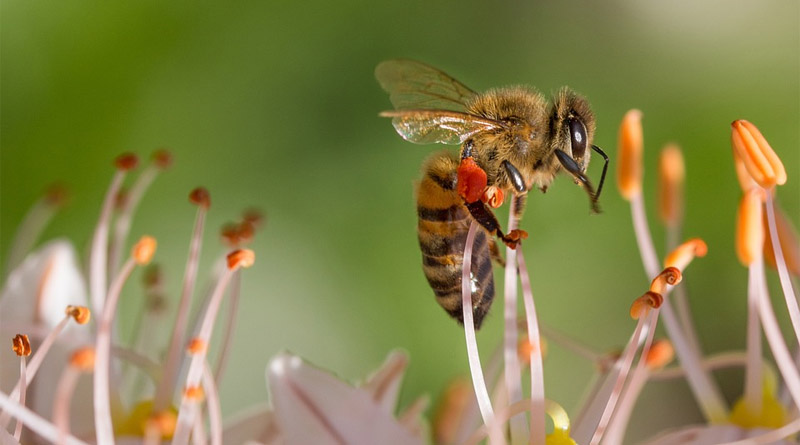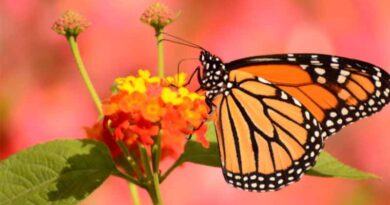Three Neonicotinoid Insecticides confirmed by the EPA to be a threat to more than 200 endangered species
09 May 2023, US: More than 200 endangered species are at risk of extinction due to three of the most commonly used neonicotinoid insecticides, according to a recent research released by the Environmental Protection Agency (EPA).
The EPA investigation demonstrates that a variety of endangered species, including fish, birds, invertebrates, insect pollinators, and the plants they pollinate, are at increased risk of extinction due to clothianidin, thiamethoxam, and imidacloprid. Numerous famous species, including the Whooping crane, Indiana bat, Plymouth redbelly turtle, Karner blue butterfly, yellow larkspur, and others are threatened by neonicotinoid insecticides.
“Today the EPA confirmed what we have been warning about for years – these neonicotinoid insecticides pose an existential threat to many endangered species and seriously undermine biodiversity,” said Sylvia Wu, Senior Attorney for the Center for Food Safety. “Unfortunately, this dire news is what we have told EPA all along. EPA should be ashamed that it still has yet to ban these life-threatening pesticides.”
Bill Freese, Science Director at Center for Food Safety, said: “While we welcome EPA’s overdue action on this issue, we are closely examining the agency’s analysis to determine whether still more species are jeopardized by these incredibly potent and ubiquitous insecticides.” Freese added, “EPA has thus far given a free pass to neonicotinoids coated on corn and other crop seeds – which represent by far their largest use – that make seedlings toxic to pollinators and other beneficial insects. We must also remember that our expert wildlife agencies – the U.S. Fish and Wildlife Service and the National Marine Fisheries Service – have the final say on this matter, and may well find that neonicotinoids put even more species at risk of extinction.”
Background:
Chemically similar to nicotine, neonicotinoids kill insects by disrupting their nervous systems. Just billionths of a gram can kill or impair honeybees. Introduced in the 1990s, neonicotinoids have rapidly become the most widely used insecticides in the world. Neonics can be sprayed or applied to soil, but by far the biggest use is application to seeds. The neonic seed coating is absorbed by the growing seedling and makes the entire plant toxic. CFS has a separate casechallenging EPA’s regulation of these seed coatings.
Bees and other pollinators are harmed by exposure to neonic-contaminated nectar and pollen, with studies demonstrating disruptions in flight ability, impaired growth and reproduction as well as weakened immunity. Neonic-contaminated seed dust generated during planting operations causes huge bee kills, while pollinators also die from direct exposure to spray.
Neonics are also persistent (break down slowly), and run off into waterways, threatening aquatic organisms. EPA has determined that neonics likely harm all 38 threatened and endangered amphibian species in the U.S., among hundreds of other organisms. Birds are also at risk, and can die from eating just one to several treated seeds.
In 2019, pursuant to a legal settlement with CFS, EPA announced the cancellation of 12 neonicotinoid products. CFS’s successful case—litigated from 2013-2018 on behalf of a coalition of conservationists and beekeepers—challenged the agency’s failure to protect pollinators, beekeepers, and endangered species from two toxic neonicotinoids–clothianidin and thiamethoxam. EPA was also required under the settlement to evaluate the potential harm of the two neonicotinoids to endangered species and comply with its duties under the Endangered Species Act (ESA). EPA issued its final biological evaluations in June of 2022, finding that each “neonic” is likely to adversely affect from two-thirds to over three-fourths of America’s endangered species—1,225 to 1,445 species in all.
Today’s announcement conveys EPA’s finding that neonicotinoids not only adversely affect over 1,000 species, but quite literally threaten the continued existence of over 200 of them; similarly, neonicotinoids jeopardize 34 of the critical habitats without which the associated endangered species cannot survive.
As required by the ESA, EPA’s June 2022 findings of adverse effect triggered the agency’s duty to formally consult with the federal Fish and Wildlife Service and National Marine Fisheries Service. It is now up to the two expert wildlife agencies to make the final calls on species at risk of extinction from neonicotinoid exposure.
(For Latest Agriculture News & Updates, follow Krishak Jagat on Google News)















